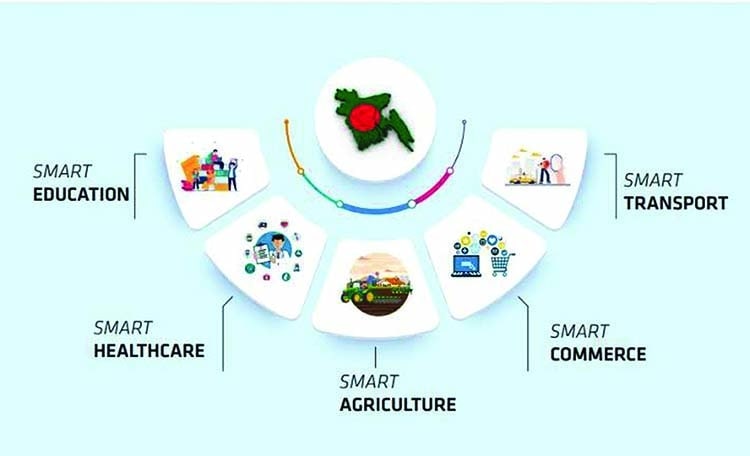Technological innovation has been a significant driver of economic growth throughout history. The development and diffusion of new technologies have led to increased productivity, higher living standards, and economic prosperity. Technological innovation has also contributed to the creation of new industries, jobs, and wealth. In recent years, advances in technology, particularly in areas such as artificial intelligence, biotechnology, and renewable energy, have the potential to transform the global economy. This article aims to review the literature on the impact of technological innovation on economic growth.
Table of contents
Introduction
Technological innovation refers to the creation and implementation of new or improved products, processes, or services that provide greater value to consumers or firms. Technological innovation has been a key driver of economic growth throughout history. From the industrial revolution to the digital age, technological innovation has transformed the global economy and improved people’s lives. Technological innovation has been associated with increased productivity, higher living standards, and economic prosperity. Technological innovation has also created new industries, jobs, and wealth.
Technological Innovation and Economic Growth
Technological innovation has been a significant driver of economic growth. In general, technological innovation can lead to economic growth in two ways: first, it can increase productivity by enabling firms to produce more goods and services with the same inputs; second, it can create new products, processes, or services that increase consumer welfare. Technological innovation can also lead to the creation of new industries, jobs, and wealth.
Theoretical Frameworks for Understanding the Impact of Technological Innovation on Economic Growth
Several theoretical frameworks have been developed to understand the impact of technological innovation on economic growth. One of the most influential frameworks is the neoclassical growth model. The neoclassical growth model posits that technological progress is the main driver of economic growth. According to the neoclassical growth model, technological progress leads to an increase in the marginal product of labor, which leads to higher output, income, and consumption.
Another theoretical framework for understanding the impact of technological innovation on economic growth is the endogenous growth model. The endogenous growth model posits that technological progress is endogenous, meaning that it is determined by factors such as research and development, human capital, and knowledge spillovers. According to the endogenous growth model, technological progress can lead to sustained economic growth.
Empirical Evidence on the Impact of Technological Innovation on Economic Growth
Empirical studies have provided evidence on the impact of technological innovation on economic growth. One study by Daron Acemoglu and colleagues found that the adoption of new technologies is a key driver of productivity growth. Another study by Philippe Aghion and colleagues found that technological innovation is positively associated with economic growth, particularly in industries with high levels of competition and low levels of regulation.
Other studies have found that the impact of technological innovation on economic growth can be influenced by factors such as the level of education, the quality of institutions, and the level of research and development. For example, a study by Manuel Trajtenberg found that the impact of research and development on economic growth is larger in countries with high levels of education.
Conclusion and Policy Implications
Technological innovation has been a significant driver of economic growth throughout history. The development and diffusion of new technologies have led to increased productivity, higher living standards, and economic prosperity. Technological innovation has also contributed to the creation of new industries, jobs, and wealth. The empirical evidence suggests that the impact of technological innovation on economic growth is positive and significant. However, the impact can be influenced by factors such as the level of education, the quality of institutions, and the level of research and development.
From a policy perspective, it is important for governments to create an environment that is conducive to technological innovation. This can be achieved through policies such as investment in research and development, education and training, and intellectual property protection. In addition, policies that promote competition and reduce barriers to entry can also encourage innovation and technological progress.
However, it is important to note that technological innovation can also have negative consequences, such as job displacement and environmental degradation. Therefore, it is important for governments to also consider the social and environmental impacts of technological innovation and implement policies that mitigate these negative consequences.
Overall, technological innovation has been a significant driver of economic growth throughout history. The empirical evidence suggests that the impact of technological innovation on economic growth is positive and significant. From a policy perspective, it is important for governments to create an environment that is conducive to technological innovation while also considering the social and environmental impacts of technological progress.
Bibliography
- Acemoglu, Daron, Ufuk Akcigit, and William R. Kerr. “Innovation Network.” NBER Working Paper No. 21558, September 2015.
- Aghion, Philippe, Ufuk Akcigit, and Peter Howitt. “What Do We Learn From Schumpeterian Growth Theory?” Handbook of Economic Growth, Vol. 2A, Chapter 2, 2014.
- Trajtenberg, Manuel. “R&D Policy in Israel: An Overview and Reassessment.” The Journal of Industrial Economics, Vol. 48, No. 2, 2000, pp. 157-178.
- Mokyr, Joel. The Lever of Riches: Technological Creativity and Economic Progress. Oxford University Press, 1990.
- Romer, Paul M. “Endogenous Technological Change.” The Journal of Political Economy, Vol. 98, No. 5, Part 2, 1990, pp. S71-S102.
- Grossman, Gene M., and Elhanan Helpman. “Innovation and Growth in the Global Economy.” MIT Press, 1991.
- Jones, Charles I. “R&D-Based Models of Economic Growth.” Journal of Political Economy, Vol. 103, No. 4, 1995, pp. 759-784.
- UNCTAD. “Technology and Innovation Report 2021: Exploring the South for Digital and Green Transformation.” United Nations, 2021.
- World Economic Forum. “The Global Competitiveness Report 2021.” World Economic Forum, 2021.



 For all latest articles, follow on Google News
For all latest articles, follow on Google News